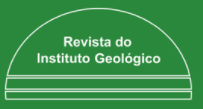Risk management and vulnerability to sea level rise in Brazil, with emphasis to the legacy of the Metropole Project in Santos
DOI:
https://doi.org/10.14295/derb.v43.768Palabras clave:
Sea level rise; Climate change; Floods; Coastal erosion; RainfallResumen
Sea Level Rise (SLR) poses a range of threats to natural environments and built infrastructure in coastal zones around the world. Coastal cities in Brazil are vulnerable to the effects of SLR and to the intensity of storms that induce more storm surges and coastal inundation. Studies on vulnerability of coastal cities in Brazil have been developed by multidisciplinary and multinational collaboration between teams of natural and social scientists. Perhaps the best example is the METROPOLE Project (An Integrated Framework to Analyze Local Decision Making and Adaptive Capacity to Large-Scale Environmental Change), a partnership between Brazil, United States and United Kingdom developed to evaluate how local government, stakeholders and citizens may decide about adaptation options related to SLR and extreme events projections. In this paper we show how some results of the METROPOLE project have been considered in the definition of public polices of climate change adaptation and for practical actions to increase resilience of Santos by reducing beach erosion, to reduce climate risk.
Descargas
Descargas
Publicado
Cómo citar
Número
Sección
Licencia
Derechos de autor 2022 José Marengo, Lucí Hidalgo Nunes, Celia Regina de Gouveia Souza, Eduardo Kimoto Hosokawa, Greicilene Regina Pedro, Joseph Harari, Paula Franco Moreira, Pacita López Franco, Marcos Pellegrini Bandini, Patricia Dalsoglio Garcia, Tiago Zenker Gireli

Esta obra está bajo una licencia internacional Creative Commons Atribución 4.0.
Política de Acesso Livre:
A revista Derbyana oferece acesso livre ao seu conteúdo. Toda a coleção da Revista é disponibilizada de forma gratuita em https://revistaig.emnuvens.com.br/derbyana e no Portal de Periódicos Eletrônicos em Geociências – PPeGeo (http://ppegeo.igc.usp.br), resultado de parceria entre a Sociedade Brasileira de Geologia e o Serviço de Biblioteca e Documentação do Instituto de Geociências da Universidade de São Paulo.




















